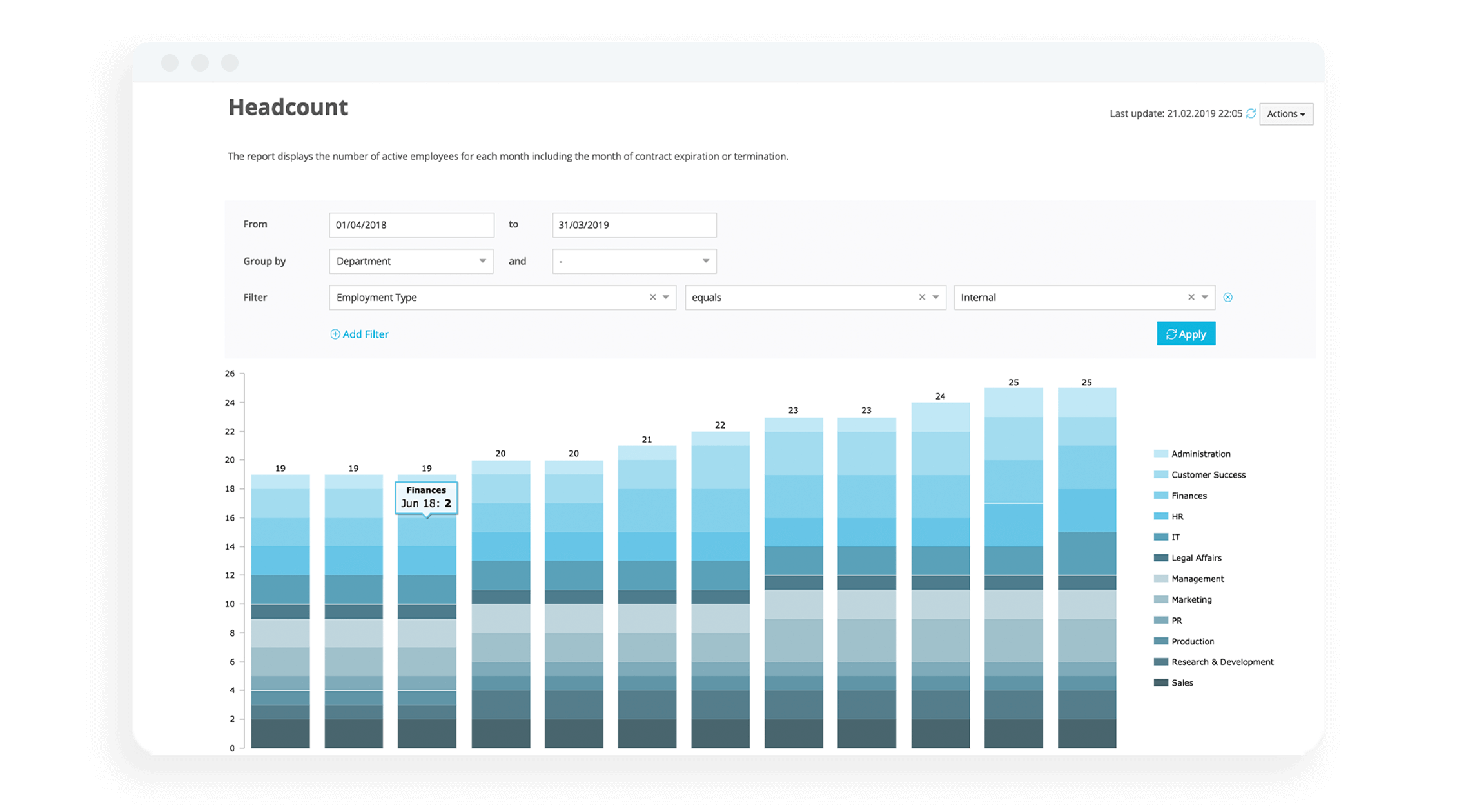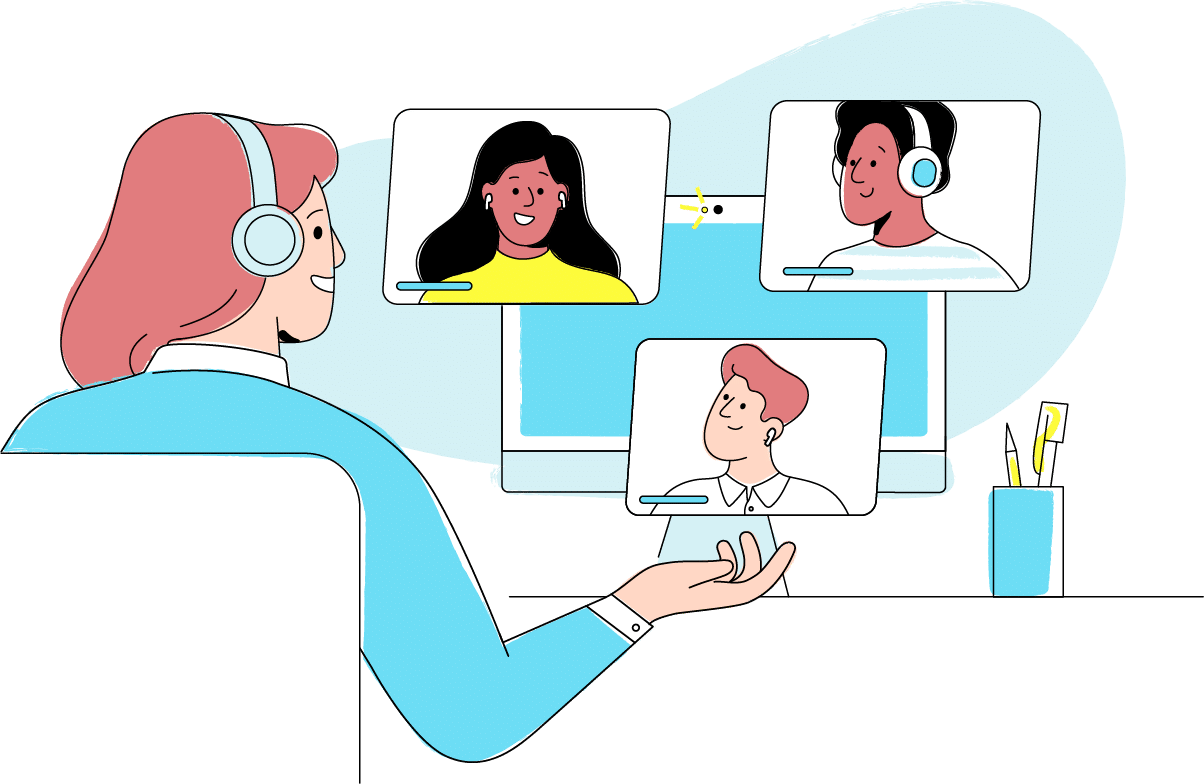Leveraging Diversity and Inclusion in the Workplace

Diversity and inclusion (D&I) in the workplace benefits all employees. What does D&I look like in practice, and how can HR professionals responsibly and authentically create opportunities for it at work? We demonstrate how and give you tips on how to implement D&I policies in your workplace today.
Key Facts
Diversity and inclusion are interconnected but not interchangeable concepts. Nevertheless, they have the same goal of uplifting diverse voices within an organisation.
The Equality Act of 2010 helped push equality within the workplace.
Implementing diversity and inclusion requires a long-term commitment to remove biases from the company and its leadership.
Contents
- 1What Is Diversity and Inclusion?
- 2How Are Diversity and Inclusion Distinguished in the Workplace?
- 3Benefits of Diversity and Inclusion in the Workplace
- 4Practical Examples of Diversity and Inclusion in the Workplace
- 5What Does an HR Management Strategy for a Diversified and Inclusive Workplace Look Like?
- 6Frequently Asked Questions About Diversity and Inclusion in the Workplace
- 7Create An Equal Workplace With Personio
What Is Diversity and Inclusion?
Many use the two terms interchangeably, but examining them individually reveals that they each have distinct definitions and origins. However, both work toward ensuring that various voices are heard in an organisation's decision-making process.
Diversity: Definition and History
Diversity refers to the differences in ethnicity, religion, social class, culture, and other factors between large groups. In the workplace, diversity brings a variety of new perspectives that can offer unique ideas and viewpoints to the creative or brainstorming process. While workplaces were making steady progress in including people from various backgrounds, the UK’s Equality Act of 2010 played a major role in making diversity more commonplace at work.
Nonetheless, there’s still work to be done as various ages, races, and beliefs are still underrepresented in the working world. Including more diversity in your business can be as simple as broadening your recruitment efforts to areas you might not have considered in the past.
Inclusion: Definition and History
Inclusion is when every employee, regardless of background, gets the opportunity to feel engaged with the company. They’re included in your business's daily operations, and their contributions are valued and respected by their co-workers and the management.
It’s a fair assumption that inclusion grew alongside diversity, having also been heavily affected by the Equality Act of 2010. But it’s also possible that the concept of inclusion was a step behind considering that some workplaces would hire individuals based on their diverse backgrounds solely to comply with the act. Hiring to check a “diversity box” can lead to tokenism within your workplace, making the people you brought on feel isolated from their peers.
Therefore, when you bring a diverse range of workers into your business, it’s important that you empower them to excel in their roles.
How Are Diversity and Inclusion Distinguished in the Workplace?
Diversity and inclusion are interconnected concepts within the workplace, but the concepts distinguish themselves by relying on each other to work.
Diversity describes the innate variance between individuals with regard to aspects such as race, religion, gender, socioeconomic class and other factors. In the workplace, the term focuses on the makeup of your workforce and how much variability is present amongst the employees. It helps create equality in your business but won't amount to much when it’s not paired with inclusivity. The people you hire won’t be afforded the same respect or career opportunities, potentially leading to a toxic work environment and a hit to your brand’s reputation.
Inclusion refers to how your company utilises its diverse workforce by creating an environment that encourages them to participate. An inclusive workplace has fair policies and supports everyone equally so workers feel as comfortable in their own skin as possible. However, it’s important to have inclusivity and diversity in the workplace; otherwise, the similarities in your workforce stagnate the creative process. Your products and services won’t be able to keep up with competitors because an abundance of a certain mindset doesn’t leave much room for innovation.
Instantly Analyse Your Workforce For Headcount, Diversity & More!

Personio offers a clear overview of KPIs and other analytics to make your HR more strategic and more data-driven than ever before. Discover automatic reporting with Personio today.
HR Analytics With Personio
Benefits of Diversity and Inclusion in the Workplace
A diverse workforce provides several notable benefits for your company. Often, these benefits stem from the sense of belonging that diversity and inclusion create, leading employees to produce higher-quality work in less time. Some other advantages include:
New Perspectives. The more diverse your workforce, the easier it is for your company to improve previous ideas and overcome difficult challenges. Also, with your employees coming from diverse backgrounds, they have a better chance of predicting what customers will want in an ever-changing market.
More Potential Candidates. Today’s employees scrutinise whether a company matches their values and treats them well. Not only does diversity increase the size of your talent pool, but inclusion improves your company’s reputation, ensuring that more people would want to work there. Additionally, including employees in the day-to-day business operations and helping them improve their skills helps ensure that they stay on long term.
Improved Decision-Making Process. Many companies keep major business decisions at the corporate level but miss out on the valuable insights that diversity can provide. Including employees in your decision-making process lets your company consider problems from a new perspective and find solutions you hadn’t considered before. Additionally, higher-ups will gain a broader understanding of their workers' issues and how the employees will be affected by the solutions.
Higher Performance and Results. In today’s job market, diversity and inclusion makes you more competitive and can mean the difference between falling behind your peers or being an industry leader. Finding higher quality candidates from a broadened talent pool and keeping them happy once they're signed on pays dividends for your company’s performance.
Practical Examples of Diversity and Inclusion in the Workplace
Below are a few examples of strategies companies use when they’re seeking to become more diverse and inclusive.
Update Your Hiring Strategies
Getting a more diverse workplace starts with examining your hiring strategies and changing them to receive a larger number of applications from candidates from diverse backgrounds. Pulling talent from various places demonstrates that your company is serious about hiring people of all races, genders and religions. This, in turn, can help attract more qualified candidates who value inclusiveness.
You can open up your hiring practices by starting an internship program that recruits from local universities and earmarks top-quality candidates to hire in the future. Similarly, you can partner with organisations that represent the interests of diverse groups, getting quality candidate recommendations from them.
Strive to Hear All Voices During Meetings
Building a diverse team within your organisation is one way to build an inclusive workplace, but it is only a step in the right direction. Those employees can’t just be in the room; they need to have a clear voice in the brainstorming process and feel comfortable sharing their opinions with their peers. The best way to show your company’s dedication to inclusiveness is by making sure the meeting room, and the workplace, in general, is a safe place for everyone.
One way to do that is to actively seek out the opinions of quieter team members while not forcing them to come up with ideas on the spot. That shows that the experience they bring to the floor is valued even if they don’t have anything to say at that moment while also encouraging them to share in the future.
Assess Your Business Regularly
A business dedicated to being inclusive and diverse will repeatedly analyse its structures and processes to eliminate unconscious biases. The evaluation would be an extensive process, but it helps ensure a fair workplace for your employees and, in turn, guarantees low turnover rates.
Monitoring decisions for bias can be difficult because we often don’t realise they’re there. Catching unconscious bias often means taking a step back and examining our own thought processes in a vacuum. Moreover, it’s also important to accept criticism for bias from your employees and take those complaints seriously.
Making Change More Successful

Our change management guide offers a look into the processes that help make change in your organisation more successful and sustainable.
Download Our GuideWhat Does an HR Management Strategy for a Diversified and Inclusive Workplace Look Like?
Mitigating or eliminating unconscious bias in the office, the foundation of developing a diverse and inclusive workplace, can be a long and arduous project. You’ll want a solid HR management strategy for the smooth implementation of diverse and inclusive practices, and below is a concrete guide to help you create it for your organisation.
Planning. The first and most vital step to bringing more diversity into your company is to have a solid plan. Jumping into the process can lead to costly mistakes. Instead, a successful HR management strategy should identify the areas where the business needs to improve and develop initiatives to tackle any biases.
Objective Criteria. A workplace dedicated to improving diversity will also examine its hiring practices, ensuring that job descriptions don’t include language that limits the talent pool. Descriptions of company positions should clearly describe the role’s responsibilities, avoiding language describing any particular type of candidate.
Workplace Behaviour. Your strategy should describe ideal employee behaviours that reflect the equality, diversity and inclusion you want to bring into the workplace. The methods you’ll use to train employees in these traits and the consequences of not following those guidelines are also important to include.
Communication. Identify communication channels your employees can use to ensure that their voices are heard by management. This is also where you decide if you’ll have an internal newsletter or notice boards to inform your workers about the diversity and inclusion policies.
Learning and Development. Unconscious bias is difficult to tackle, and your management strategy must list learning opportunities to teach employees and leadership. The more people understand biases, the better they’ll be able to recognise them in themselves and others.
Employee Recognition. Set diversity and inclusion goals for your employees in your strategy to steadily build an equal work environment. Also, outline the rewards employees stand to receive for following the policy, while also acknowledging any positive behaviour you see firsthand.
Implementation and Measurement. Figure out how you’ll implement your new policies and over what period of time. Also, ensure you have a method for gathering data on how effective the policy is for your workforce and where it can be improved.
Frequently Asked Questions About Diversity and Inclusion in the Workplace
What Are the Benefits of Diversity and Inclusion in the Workplace?
Introducing diversity and inclusion policies into your organisation has several advantages, such as:
New perspectives to help the company overcome obstacles or make better decisions
Increased employee engagement due to a greater level of support
A wider range of candidates to help find the best talent
Improved performance for your company that can pull it ahead of your competitors
What Are Some Examples of Diversity and Inclusion?
Some examples of diversity and inclusion in practice are:
Seeking out the opinions of everyone in your team equally while in a meeting
Broadening your hiring to include people of all races, religions and beliefs
Assessing your internal policies often to identify and eliminate unconscious bias
How Can HR Leverage Diversity and Inclusion?
Implementing diversity and inclusion means HR representatives can find higher-quality candidates while raising the company’s reputation in the public eye.
Create An Equal Workplace With Personio
Confronting biases within your business isn’t easy — there’s no button to press which magically solves D&I issues at work. It takes teamwork, effort and cooperation to build a truly equal workplace.
The first step is to learn more about the most effective ways to implement D&I policies at your workplace. Learn more by diving deeper with Personio:
Disclaimer
We would like to inform you that the contents of our website (including any legal contributions) are for non-binding informational purposes only and does not in any way constitute legal advice. The content of this information cannot and is not intended to replace individual and binding legal advice from e.g. a lawyer that addresses your specific situation. In this respect, all information provided is without guarantee of correctness, completeness and up-to-dateness.

